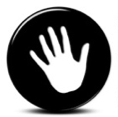Professional Networking

Online Professional Networking is About...
- Relationship Building
“The technology will begin to fade into the background so that people can focus on the relationships that are created because of the technologies, not the technologies themselves.” - Charlene Li, founder, Altimeter Group
- Return on Investment
“Look for social to become less about the ‘what is it’ and even more about the ROI.” - Marc Meyer, principal, Digital Marketing Response Group
- Online identity management
"Being online is like being in public."
Ask Yourself...
These questions will help focus this session (and your later networking decisions):
- What does my online profile consist of now?
- How do I maintain connections with my current networks? What features,tools, practices help me to maintain these connections?
- Who is missing from my networks? Where are their networks? Facebook? LinkedIn? Twitter? Blogging networks?
- What's the best strategy for me/what can I keep up with? Portfolio? Blog? Profile? Webpage? Networking sites?
Activity 1: How does the internet see YOU?
 Personas: MIT's exhibit: Personas shows you how the Internet sees you.
Personas: MIT's exhibit: Personas shows you how the Internet sees you.
Do a search on your name and discuss your findings with the people around you:
- Did any of the displayed data relate to you?
- How many others were represented in the profile for your name?
- What does that tell you?
- What are the risks in NOT having an online presence? In having one?
Activity 2: The Care and Feeding of Your Network
 5 minute brainstorm with the people around you to come up with your list of top 5 reasons to build a professional network online.
5 minute brainstorm with the people around you to come up with your list of top 5 reasons to build a professional network online.
Consider the following questions:
- Who is in my networks now (Facebook, etc)?
- What do I do to maintain those connections?
- Who is missing from my network?
- Where do I find them and what can I offer them?
Resource: The Care and Feeding of Your Network
Top 5 Tips for "Professionalizing" Your Network
1. Start small
- if you have a Facebook account, review your privacy settings.
- if you create a LinkedIn account, start with the essentials.
- connect with the people you already know first.
Blogs and Twitter accounts can be associated with your profiles via feeds and APIs - just be sure you want those connections between your networking tools.
2. Be yourself
- be honest about who you are and what you can offer - people respect that
- own up to your social networking gaffs.
3. Participate and share
- networks are built on trust and reciprocity.
4. Keep up
- know what the people in your network are doing
- let people know what you are doing
5. Choose your tools wisely
- find the tools and approaches that are a good fit for you and that you enjoy.
Examples
Your profile?: in technicolor
Personas: MIT's exhibit: Personas shows you how the Internet sees you.
Networking: with who and where?
Portfolios (blogs)
The Creative Career: PR Blogger making the transition from college to career
UBC Faculty - teaching portfolio
Activity 3: Setting Up a LinkedIn Profile
 Spend 5 minutes creating a Summary of your skills and qualifications (look at the profile examples to help you generate ideas).
Spend 5 minutes creating a Summary of your skills and qualifications (look at the profile examples to help you generate ideas).
LinkedIn Grad Guide video: http://grads.linkedin.com/
Step by step instructions and tips on creating a profile
Why create a LinkedIn profile?
- employers can find you
- contacts are aware of your experience
- good PR tool: build your own brand (online resume)
- have a professional presence - "like your business suit online"
- access to networks through UBC alumni group, Grad Guide 09 group
View sample profiles of recent grads: http://grads.linkedin.com/#
Elements of a profile:
Summary:
- executive summary of your skills and qualifications: snapshot
- not too long (1-2 paragraphs)
- can include your career aspirations, future goals
- highlight special skills/knowledge
Experience:
- not limited to paid work experiences; can include volunteer and committee work, student societies, etc. - resume building
- can upload content from your resume - a few points/sentences per position
- ask a colleague or supervisor for a recommendation that appears on your profile
Additional information:
- can include links to websites/blogs, associations you belong to, personal interests
Resources
Privacy
Facebook Privacy Settings - How-To video
Social Media
Pumping Up Your Professional Network - Beth Kanter socialedge.org
6 Things You Should Never Do on Facebook or Twitter - CBC Moneywatch.com
Tools
LinkedIn in Plain English: Part1: LinkedIn in Plain English: Part2: Commoncraft video
LinkedIn Grad Guide
Digital Identity
Digital Tattoo tutorial/website.
License
|
|
